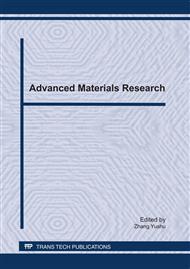p.226
p.231
p.236
p.241
p.246
p.250
p.255
p.260
p.267
Effect of Sm2O3 on the Electrical Properties of TiO2-Ta2O5-Based Capacitor-Varistor Ceramics
Abstract:
TiO2 ceramics doped with 0.1 mol% Ta2O5 and different concentrations of rare earth oxide Sm2O3 were obtained by sintering at 1450 °C. As a varisor material, the microstructure, the nonlinear electrical behavior and dielectric properties of these ceramics were investigated. SEM and XRD were carried out to study the change of microstructure. The results show that there exist second phase (Sm2Ti2O3) on the surface on the surface of TiO2 grains. The ceramics have nonlinear coefficients of α = 2.0-4.0 and ultrahigh relative dielectric constants which is up to 104. The sample doped with 0.5 mol% Sm2O3 exhibits high nonlinear constant of 3.7, low breakdown voltage of 21.5 v/mm, ultrahigh electrical permittivity of 4.25× 104 and low tanδ of 0.37. It is suggested that the sample doped with 0.5 mol% Sm2O3 forms the most effective boundary barrier layer. The defects theory was introduced to illustrate the nonlinear electrical behavior of TiO2-Ta2O5-Sm2O3 varistor ceramics.
Info:
Periodical:
Pages:
246-249
Citation:
Online since:
February 2011
Authors:
Keywords:
Price:
Сopyright:
© 2011 Trans Tech Publications Ltd. All Rights Reserved
Share:
Citation:


